An Idea Mapping Success Blogs Weblog
More Idea Maps and Mind Maps from Luther College Principles of Management Students. Examples 375 – 381.
3 Jul 2012 Author: Jamie Nast In: Idea Mapping Example, Mind Mapping Examples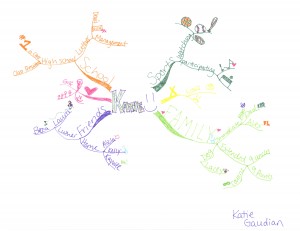


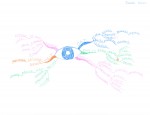


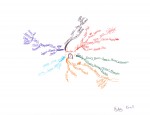 This is the third set of Idea Mapping examples from Dr. Tim Schweizer’s Spring 2012 students. I have been following Tim’s work since October 2009 — shortly after he attended one of my Idea Mapping Workshops. Search this blog on “Luther College” for more examples.
This is the third set of Idea Mapping examples from Dr. Tim Schweizer’s Spring 2012 students. I have been following Tim’s work since October 2009 — shortly after he attended one of my Idea Mapping Workshops. Search this blog on “Luther College” for more examples.
Tim has developed a solid process to successfully teach Idea Mapping to his students. Tim takes the first two class periods to teach this tool to his students. Their first assignment is to create a map with “Who Am I?” as the topic. I’ll share this series first before posting their other assignments.
Sure wish I’d learned Idea Mapping when I was in college. Thank you Katie Gaudian, Kaitlin Heikkinen, Katelyn Kluge, Julia Ham, Jordyn Dudek, Jarid Groth and Kelsey Krall for sharing your maps!
A Costco Connection Magazine Article – Tuning Up Your Brain
30 Jun 2012 Author: Jamie Nast In: Articles The sub-caption is “Healthy Ways to protect your memory.“
The sub-caption is “Healthy Ways to protect your memory.“
This article written by Heidi Smith Luedtke is in the June 2012 – Volume 27 – Number 6 edition. It’s on pages 31-32. I thought that some of you Costco members would enjoy this article.
Some of the highlights of this article include:
- Learning
- Memory
- Brain Growth
- Eating Smart
- Reducing Risks for Alzheimer’s
- Exercise
- Mental Health
Idea Map 374. Nanny Needed in Ann Arbor/Saline Area.
28 Jun 2012 Author: Jamie Nast In: Idea Mapping Example, Mind Mapping Examples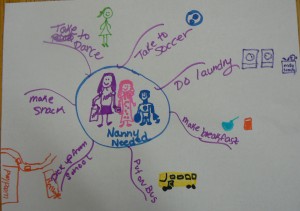 This Idea Map is one of my more unusual examples.
This Idea Map is one of my more unusual examples.
Last week I taught an Idea Mapping Workshop for SLI (Saline Leadership Institute). I have been one of the instructors for this program for the last 15 years. One of the participants created this Idea Map on her need to find a nanny for her three elementary aged children. Following are a few more details on the job requirements:
Hours: M-F 7:30am-8:30am and approx. 3pm-5:30pm. Some evenings may be a bit later.
Responsibilities: Helping children get ready for school, assist with breakfast, put on school bus at designated time. Picking children up from school and transporting them to activities in Saline. Assisting with homework, play, and laundry.
Requirements: Love for children and experience working with elementary aged children. Reliable car and good driving record with fewer than 4 points on record. Please contact Kim 734-645-9691.
Although she has an Ann Arbor mailing address, the children are in the Saline school district.
Press Release for Free Idea Mapping or Mind Mapping Webinar July 12, 2012 Led By Author Jamie Nast
27 Jun 2012 Author: Jamie Nast In: Idea Mapping Press Releases, WebinarsThe Werner Institute, housed within the Creighton University School of Law, will host a webinar on the topic as part of its monthly webinar series on topics related to negotiation and dispute resolution; through the Institute’s free social media community ADRhub. The press release provides more details.
Register at: http://adrhubjuly2012.eventbrite.com/ if you would like to attend. The webinar will be a 1-hour event starting at 6pm EST on July 12, 2012.
Idea Mapping Book – Best-Seller for Week of June 18 for The Project Management Bookstore
23 Jun 2012 Author: Jamie Nast In: Books, Bookstore, idea mapping book, Project Management The Idea Mapping book continues to be a best-seller at the Project Management Bookstore. This week it was once again back in the top 10 most popular books among project managers. PMPs can earn 15 PDU credits under category for attending the 2-day Idea Mapping Workshop.
The Idea Mapping book continues to be a best-seller at the Project Management Bookstore. This week it was once again back in the top 10 most popular books among project managers. PMPs can earn 15 PDU credits under category for attending the 2-day Idea Mapping Workshop.
More Idea Maps and Mind Maps from Luther College Principles of Management Students. Examples 367-373.
20 Jun 2012 Author: Jamie Nast In: Idea Mapping Example, Mind Mapping Examples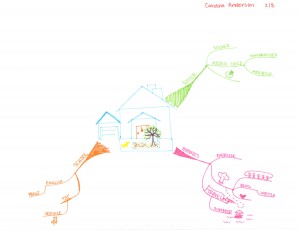

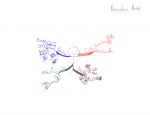
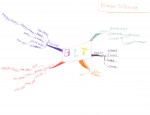
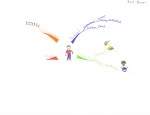
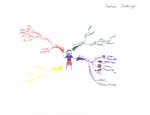
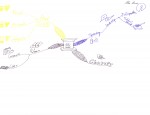 These are the second set of Idea Mapping examples from Dr. Tim Schweizer’s Spring 2012 students. I have been following Tim’s work since October 2009 — shortly after he attended one of my Idea Mapping Workshops. Search this blog on “Luther College” for more examples.
These are the second set of Idea Mapping examples from Dr. Tim Schweizer’s Spring 2012 students. I have been following Tim’s work since October 2009 — shortly after he attended one of my Idea Mapping Workshops. Search this blog on “Luther College” for more examples.
Tim has developed a solid process to successfully teach Idea Mapping to his students. Tim takes the first two class periods to teach this tool to his students. Their first assignment is to create a map with “Who Am I?” as the topic. I’ll share this series first before posting their other assignments.
Sure wish I’d learned Idea Mapping when I was in college. Thank you Caroline Anderson, Brad Jones, Brandon Boles, Brandon Torkelson, Brent Blaser, Jackson Stalberger and Abhra Biswas for sharing your maps!
Create Online, Collaborative Mind Maps and Idea Maps Using Video, Images, and Text with Visual Root.
15 Jun 2012 Author: Jamie Nast In: Idea Mapping Software, Mind Mapping Software, Visual Communication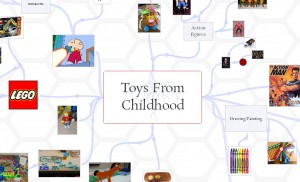 Visual Root is a new website that enables visitors to create massive online collaborative Mind Maps and Idea Maps. Created by Victor Palmer and James Patton Visual Root is different from the MANY commercial (and free) mind mapping programs out there. Victor states:
Visual Root is a new website that enables visitors to create massive online collaborative Mind Maps and Idea Maps. Created by Victor Palmer and James Patton Visual Root is different from the MANY commercial (and free) mind mapping programs out there. Victor states:
So I began building a root for myself as an experiment. I kept it fun and light-hearted and titled the map “Toys From Childhood”. One of the enjoyable aspects of my Idea Mapping Workshops is the environment — filled with toys, color, books, idea maps, markers, music and bubble gum! Surprisingly many others have added their favorite toys to this root. You can’t see the entire map in this image, but you can from Visual Root. I invite you to play along with us.
Why I Use the Term Idea Mapping Over Mind Mapping?
11 Jun 2012 Author: Jamie Nast In: Certified Idea Mapping Instructors, Dave Gunby, Differences Between Idea Mapping and Mind Mapping, idea mapping book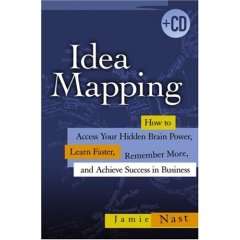 In my May 14, 2009 posting I explained what I consider to be small but significant differences between Idea Mapping and Mind Mapping. I expanded a bit on one of those reasons in my May 7, 2012 posting about how Idea Mapping breaks the Mind Mapping Laws laid out in the many books on Mind Mapping. As promised in that posting I plan to talk specifically about some of these Mind Mapping Laws that aren’t always necessary or appropriate. But before I embark on that journey I wanted to answer the question posed in the title of this posting.
In my May 14, 2009 posting I explained what I consider to be small but significant differences between Idea Mapping and Mind Mapping. I expanded a bit on one of those reasons in my May 7, 2012 posting about how Idea Mapping breaks the Mind Mapping Laws laid out in the many books on Mind Mapping. As promised in that posting I plan to talk specifically about some of these Mind Mapping Laws that aren’t always necessary or appropriate. But before I embark on that journey I wanted to answer the question posed in the title of this posting.
I recently exchanged a friendly chat with some colleagues on LinkedIn. Somewhere during that discussion I was asked why I use the term Idea Mapping. I realized I hadn’t shared this part of my rationale and thought you might be interested.
Back when I was teaching mind mapping workshops (1992 – 1997) at EDS the term “mind map” resonated negatively with many professionals as a new-age or weird word in a business setting. In fact we had to change the name of the class to “Mind Matters” in an attempt to better market the course. People would often sarcastically ask me or one of the other instructors, “So — are you going to map my mind?” This continued even after I left EDS and started teaching on my own.
Don’t misunderstand this: The workshop was probably one of the most successful ones in the history of the company, and we had valid measurements to prove it. But there were many high-level leaders (even in my own organization) that didn’t personally embrace the workshop’s success enough to explore using mind mapping themselves. After 5 years of proven success the workshop was eliminated as a cost measure due to the expenses associated with the class.
As it came time to title my book in 2005, I really didn’t want the title to leave a negative impression for anyone. Mind Mapping was not a household word and marketing would be an important part of getting this valuable tool into the hands of business people who were not familiar with Mind Mapping. Because I was encouraging breaking traditional Mind Mapping Laws, I also felt the non-pure tool needed a new name. Finally I think Idea Mapping is a more accurate description of the process of creating a map. So Idea Mapping was born.
Two more interesting stories. Prior to the new name I was working with a large automotive company in the Detroit area. I’d probably taught close to 700 of their employees at this point, when the use of Mind Mapping was beginning to work it’s way into higher levels of leadership. When participants in my workshops were going to use mind mapping in meetings, projects or analysis where high level non-mind mapping leadership would be in attendance there was always one rule: Make sure you don’t call it a Mind Map. Call it a visual way of capturing information — I don’t care. But don’t call it a Mind Map or the leadership may turn off.
Lastly Dave Gunby has been teaching Mind Mapping for close to 21 years. He is also a Certified Idea Mapping Instructor. For many years Dave has taught public Mind Mapping Workshops at SMU in Texas. Advertisement would go out, people would register and like clockwork about 30% would show up for the class. In 2006 he changed the title of the workshop to Idea Mapping and nearly everyone that signed up attended. He didn’t even have enough seats to accommodate the over-crowding, so it was standing room only. The Mind Mapping title was the only thing that changed. Interesting.
My Recent Visit to TechSmith. Do You Have Snagit?
7 Jun 2012 Author: Jamie Nast In: Partners, Software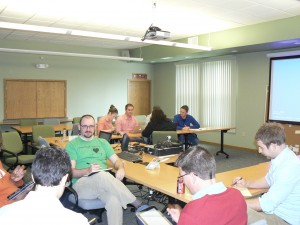
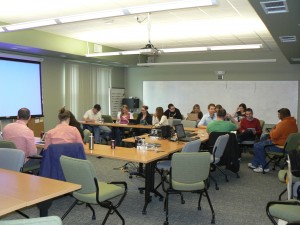 TechSmith is the maker of Snagit, Camtasia, Jing and more. I was first introduced to one of their products when I was speaking at the first VizThink event in San Francisco in January 2008. TechSmith was one of the sponsors. As a result of that event I start using one of their products called Snagit — the ultimate screen capture tool. I don’t think I’m exaggerating to say that I use it nearly every day.
TechSmith is the maker of Snagit, Camtasia, Jing and more. I was first introduced to one of their products when I was speaking at the first VizThink event in San Francisco in January 2008. TechSmith was one of the sponsors. As a result of that event I start using one of their products called Snagit — the ultimate screen capture tool. I don’t think I’m exaggerating to say that I use it nearly every day.
In March I spoke at the first VizLiteracy conference in Waterford, MI and once again TechSmith was a sponsor. I met Matt Pierce and Conan Heiselt who were also presenting. I shared with them my love of Snagit and told them that despite my frequent use of the tool, that I did think I was scraping the surface of its power — and I wasn’t. Hence I was invited to visit their offices in Okemos, MI for an afternoon. Matt was kind enough to show me a few new features in Snagit (I was also about 9 versions behind). We also discussed how Camtasia would be useful once I’d mastered Snagit.
Next Matt gathered a bunch of his colleagues and team members to join me for a 1-hour Idea Mapping overview (pictured left). To top off the day Matt did a video interview of me and we built an Idea Map together as part of the interview. I’ll let you know when it is available.
Matt & team — thanks for a great day of fun and learning!
- 0 Comments
- Tags: Camtasia, Conan Heiselt, Jing, Matt Pierce, Snagit, TechSmith
More Idea Maps and Mind Maps from Luther College Principles of Management Students. Examples 363 – 366.
6 Jun 2012 Author: Jamie Nast In: Idea Mapping Example, Mind Mapping Examples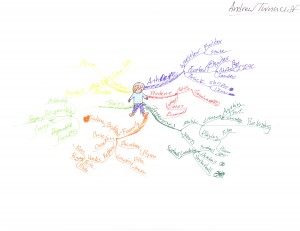
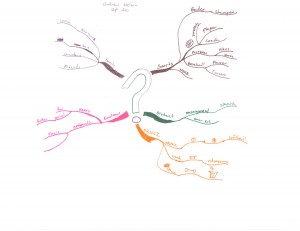
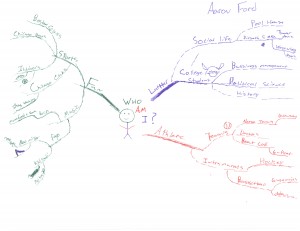
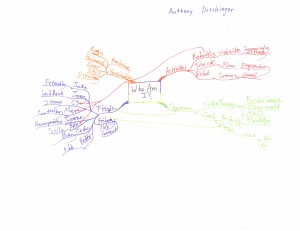 These examples are from Dr. Tim Schweizer’s Spring 2012 students. I have been following Tim’s work since October 2009 — shortly after he attended one of my Idea Mapping Workshops. Search this blog on “Luther College” for more examples.
These examples are from Dr. Tim Schweizer’s Spring 2012 students. I have been following Tim’s work since October 2009 — shortly after he attended one of my Idea Mapping Workshops. Search this blog on “Luther College” for more examples.
Tim has developed a solid process to successfully teach Idea Mapping to his students. Tim takes the first two class periods to teach this tool to his students. Their first assignment is to create a map with “Who Am I?” as the topic. I’ll share this series first before posting their other assignments.
Sure wish I’d learned Idea Mapping when I was in college. Thank you Andrew Turnacliff, Andrew Nelson, Aaron Ford and Anthony Dischinger for sharing your maps!
Idea Mapping Blog
The purpose of this blog is to share idea mapping examples and related learning from my Idea Mapping, Memory, Speed Reading, and Certification Workshops. This blog is dedicated to my Certified Idea Mapping Instructors, my clients, Mind Mapping and Idea Mapping practitioners around the globe.
![[Ask]](http://ideamapping.ideamappingsuccess.com/IdeaMappingBlogs/wp-content/plugins/bookmarkify/ask.png)
![[del.icio.us]](http://ideamapping.ideamappingsuccess.com/IdeaMappingBlogs/wp-content/plugins/bookmarkify/delicious.png)
![[Digg]](http://ideamapping.ideamappingsuccess.com/IdeaMappingBlogs/wp-content/plugins/bookmarkify/digg.png)
![[Facebook]](http://ideamapping.ideamappingsuccess.com/IdeaMappingBlogs/wp-content/plugins/bookmarkify/facebook.png)
![[Google]](http://ideamapping.ideamappingsuccess.com/IdeaMappingBlogs/wp-content/plugins/bookmarkify/google.png)
![[MySpace]](http://ideamapping.ideamappingsuccess.com/IdeaMappingBlogs/wp-content/plugins/bookmarkify/myspace.png)
![[Slashdot]](http://ideamapping.ideamappingsuccess.com/IdeaMappingBlogs/wp-content/plugins/bookmarkify/slashdot.png)
![[Sphinn]](http://ideamapping.ideamappingsuccess.com/IdeaMappingBlogs/wp-content/plugins/bookmarkify/sphinn.png)
![[StumbleUpon]](http://ideamapping.ideamappingsuccess.com/IdeaMappingBlogs/wp-content/plugins/bookmarkify/stumbleupon.png)
![[Technorati]](http://ideamapping.ideamappingsuccess.com/IdeaMappingBlogs/wp-content/plugins/bookmarkify/technorati.png)
![[ThisNext]](http://ideamapping.ideamappingsuccess.com/IdeaMappingBlogs/wp-content/plugins/bookmarkify/thisnext.png)
![[Twitter]](http://ideamapping.ideamappingsuccess.com/IdeaMappingBlogs/wp-content/plugins/bookmarkify/twitter.png)
![[Webride]](http://ideamapping.ideamappingsuccess.com/IdeaMappingBlogs/wp-content/plugins/bookmarkify/webride.png)
![[Email]](http://ideamapping.ideamappingsuccess.com/IdeaMappingBlogs/wp-content/plugins/bookmarkify/email.png)